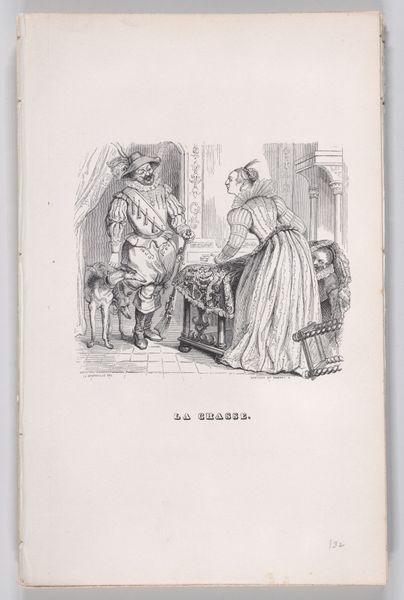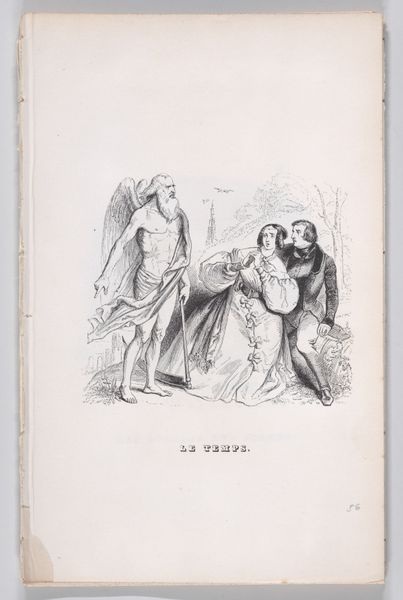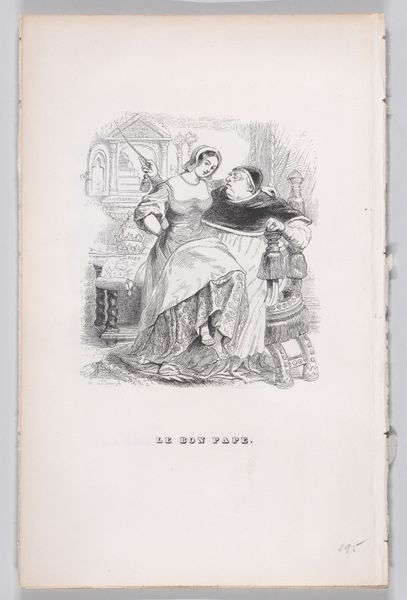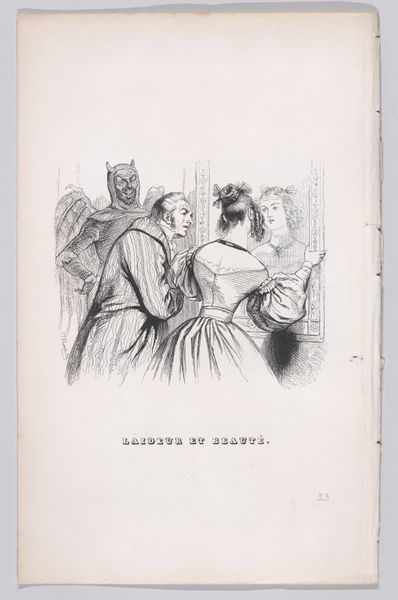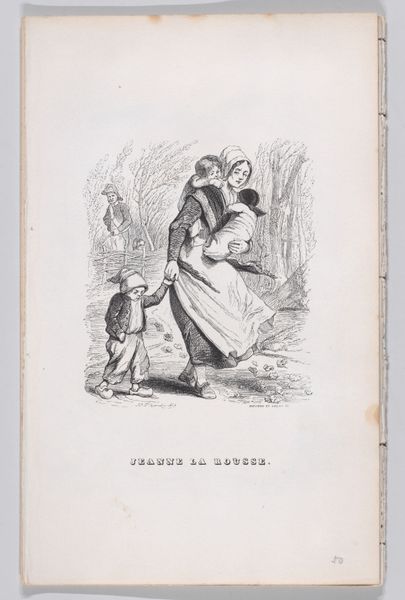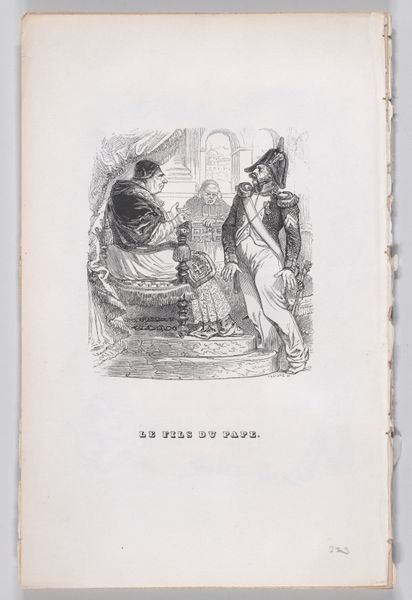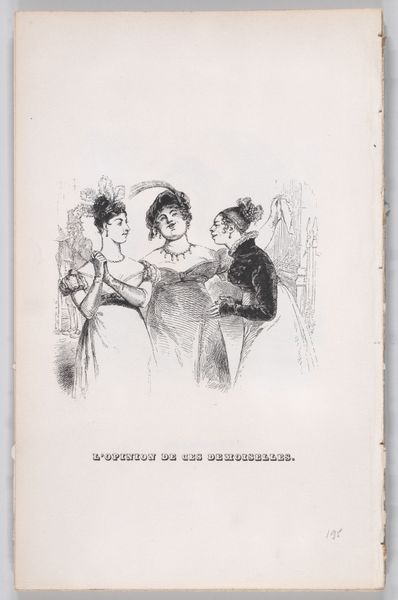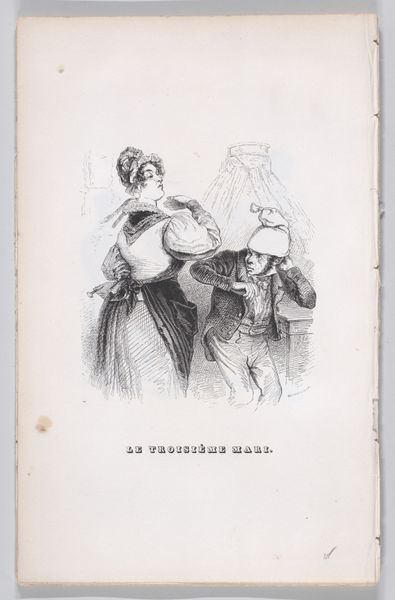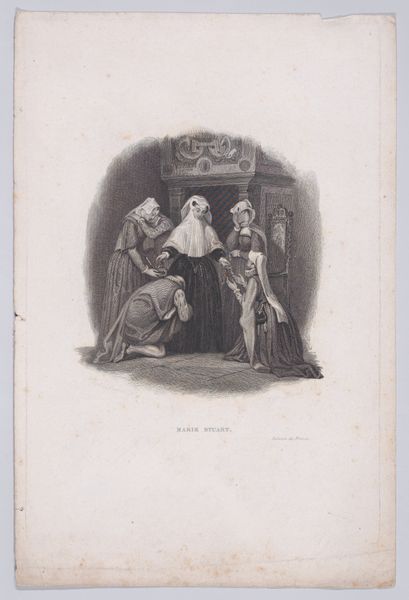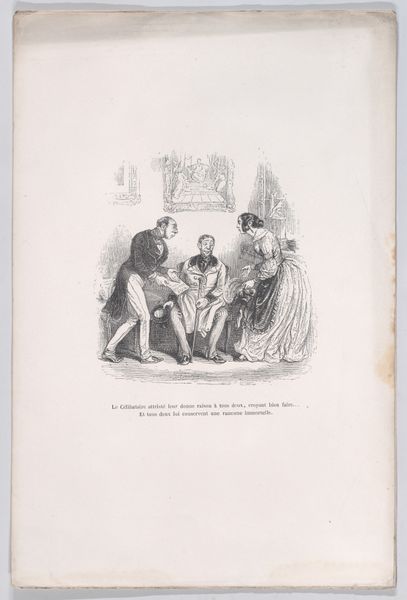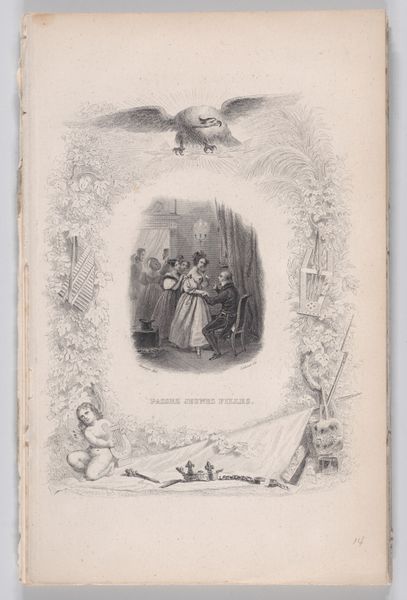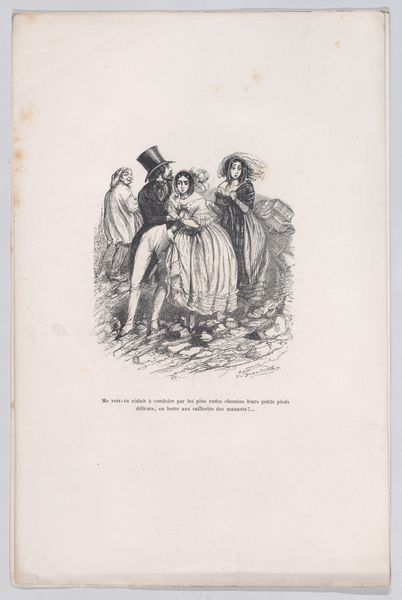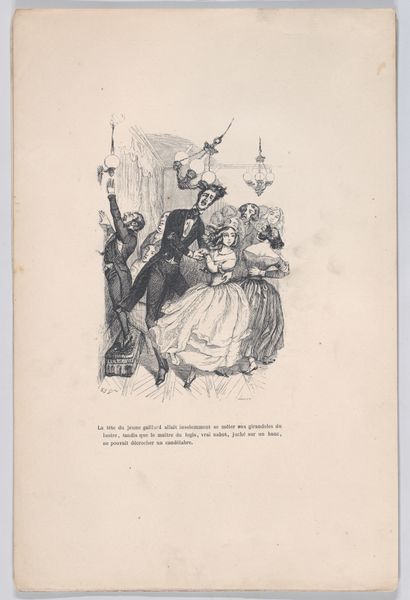
"The Two Sisters of Charity" from The Complete Works of Béranger 1836
0:00
0:00
drawing, print
#
portrait
#
drawing
#
narrative-art
# print
#
romanticism
Dimensions: Sheet: 8 5/8 × 5 1/2 in. (21.9 × 14 cm)
Copyright: Public Domain
Curator: Let’s turn our attention to J. J. Grandville’s 1836 print, “The Two Sisters of Charity,” part of The Complete Works of Béranger and housed here at the Met. What strikes you initially? Editor: There’s a softness, despite it being a print. A dreamlike quality almost, particularly around the figures’ edges where the lines dissolve. The composition is dense, very top-heavy, with a strange lightness rising from the lower register. Curator: I find it intriguing how Grandville employs a classical pyramidal composition, typically seen in Renaissance paintings. He organizes his figures with precision; a nun in dark garb on the left, juxtaposed with a radiant woman on the right and an elder. This structured balance amplifies the contrast and theme. Editor: Thinking about the actual making of this image: lithography, with its reliance on the flat stone and greasy crayon, makes me consider the printmaker’s process. How did they approach transferring Grandville's initial concept? There's skill and labour embedded. Curator: Absolutely. Technically, Grandville has utilized the cross-hatching to describe form, but consider, too, the ideological layering. The starkness of the nun is strategically positioned against the ornateness of the other sister. This contrast guides the viewer's eye, creating a subtle hierarchy of symbolic form. Editor: Yet, this print was also made for consumption. Placed within a book meant for wide circulation, this means multiple hands are part of its existence – binders, distributors, and buyers. It emphasizes the art’s role as a commodity, spreading ideas, while its materials contribute to the cultural fabric. Curator: True, the image is didactic, of course, encouraging an attitude. What do you see in it beyond those immediate signs, the wimple or garland, that communicate the artist’s theme so immediately? Editor: Well, despite Grandville's clear symbolic intent, seeing this image now, I consider how the consumption of such materials impacts social norms and cultural expectations. Does art always have to be "beautiful" to be impactful, and who gets to decide what's worthy and charitable? Curator: Excellent point. Analyzing this artwork has prompted considerations on its aesthetic and ideological intent, and it now prompts reflection on contemporary value systems. Editor: Yes, delving into the materiality and processes behind its making allows for consideration of both artistic vision and societal impact, connecting past artistry to present dialogues.
Comments
No comments
Be the first to comment and join the conversation on the ultimate creative platform.
